Rules
- White tiles: When pressed, toggle the pressed tile and the surrounding ones between white and grey.
- Yellow tiles move north.
- Violet tiles move south.
- Red tiles turn black tiles red and white tiles black.
- Black tiles shift the entire row to the right.
- Pink tiles rotate all adjacent tiles.
- Orange tiles: When pressed, if the majority of adjacent tiles share a color, then the pressed tile will change to that color.
- Blue tiles: When pressed, it copies the ability of the middle tile.
Flyers
Fun for the Family

both the peerage and common crowds. These small mechanical
puzzle boxes originated on the island Mora Jai as a children’s
game but quickly gained popularity among seafarers who
valued the compact boxes as both lockbox and entertainment
on long voyages. Over time, the boxes spread from port to port
lid featuring a 3x3 grid of white and grey tiles.
Each white tile can be pressed like a button,
which will change the color of that tile and the
surrounding squares. The goal of each box
across the world. Regional variations introduced new colors and
mechanics, offering greater challenges and local flavor.
While the fad may have ended, Mora Jai Boxes still make for a
memorable gift for both collectors and puzzle enthusiasts.
The Arch Aries Variation
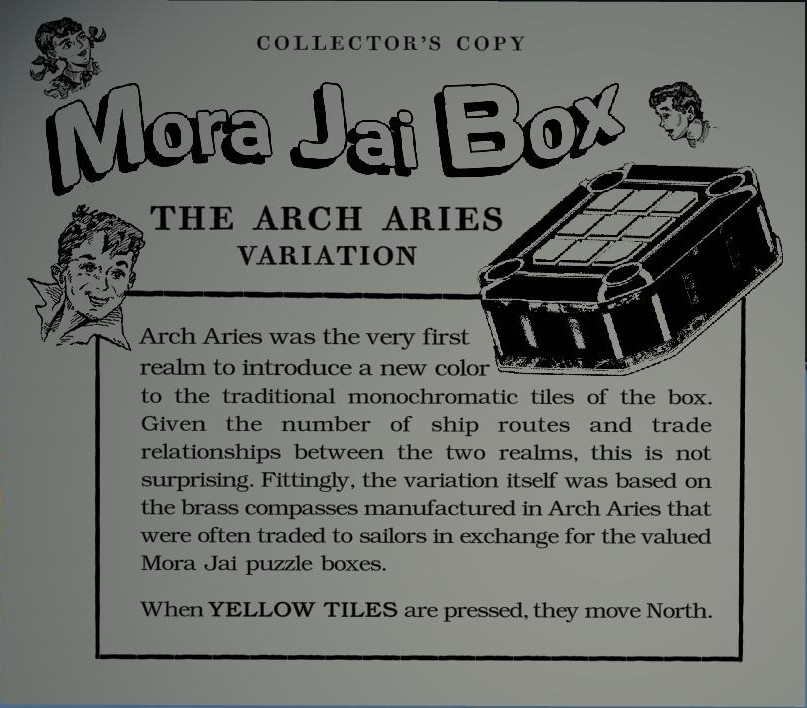
Arch Aries was the very first
realm to introduce a new color
to the traditional monochromatic tiles of the box.
Given the number of ship routes and trade
relationships between the two realms, this is not
surprising. Fittingly, the variation itself was based on
the brass compasses manufactured in Arch Aries that
were often traded to sailors in exchange for the valued
Mora Jai puzzle boxes.
When YELLOW TILES are pressed, they move North.
The University Variation
Corarica
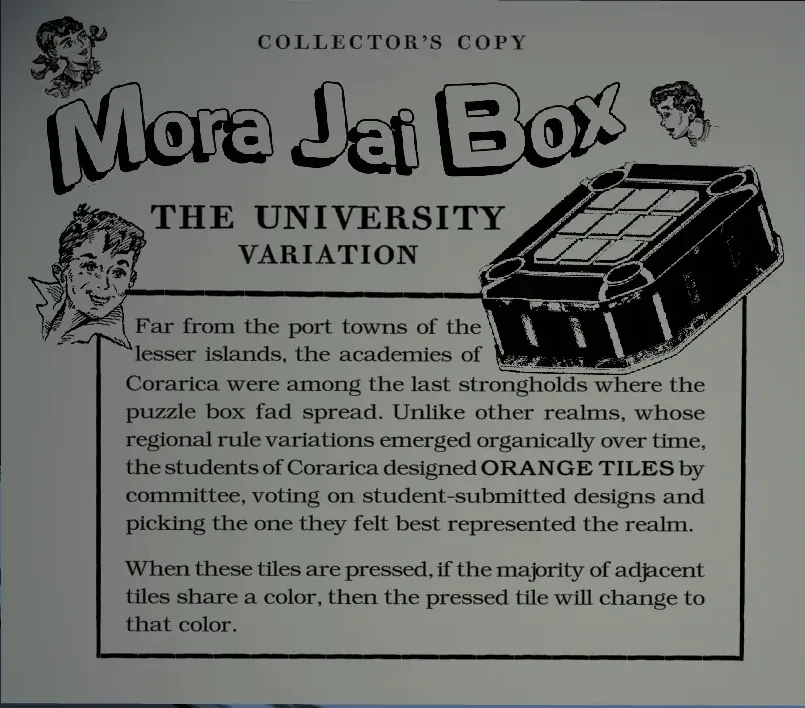
Far from the port towns of the
lesser islands, the academies of
Corarica were among the last strongholds where the
puzzle box fad spread. Unlike other realms, whose
regional rule variations emerged organically over time,
the students of Corarica designed ORANGE TILES by
committee, voting on student-submitted designs and
picking the one they felt best represented the realm.
When these tiles are pressed, if the majority of adjacent
tiles share a color, then the pressed tile will change to
that color.
The Eraja Variation
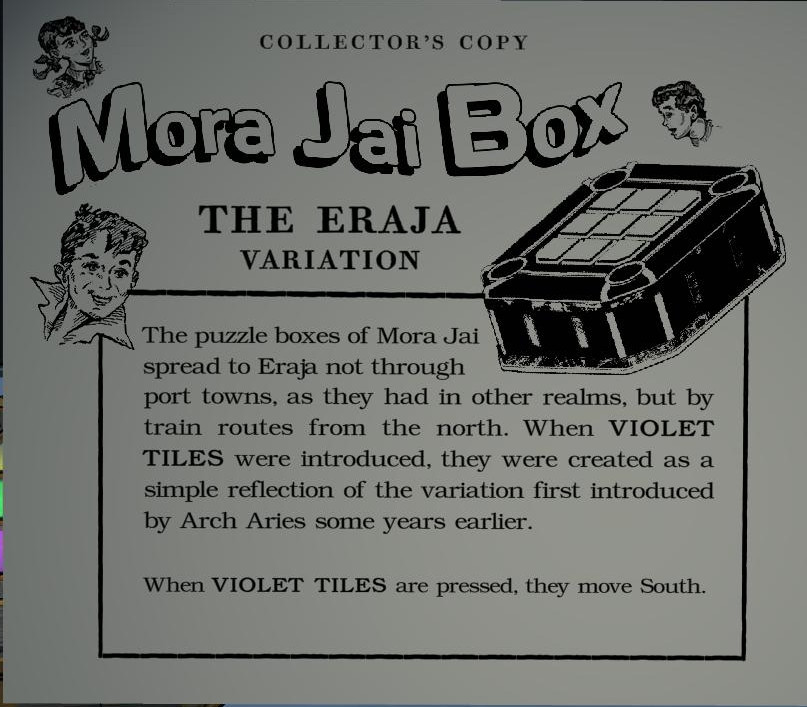
The puzzle boxes of Mora Jai
spread to Eraja not through
port towns, as they had in other realms, but by
train routes from the north. When VIOLET
TILES were introduced, they were created as a
simple reflection of the variation first introduced
by Arch Aries some years earlier.
When VIOLET TILES are pressed, they move South.
The Fenn Aries Variation
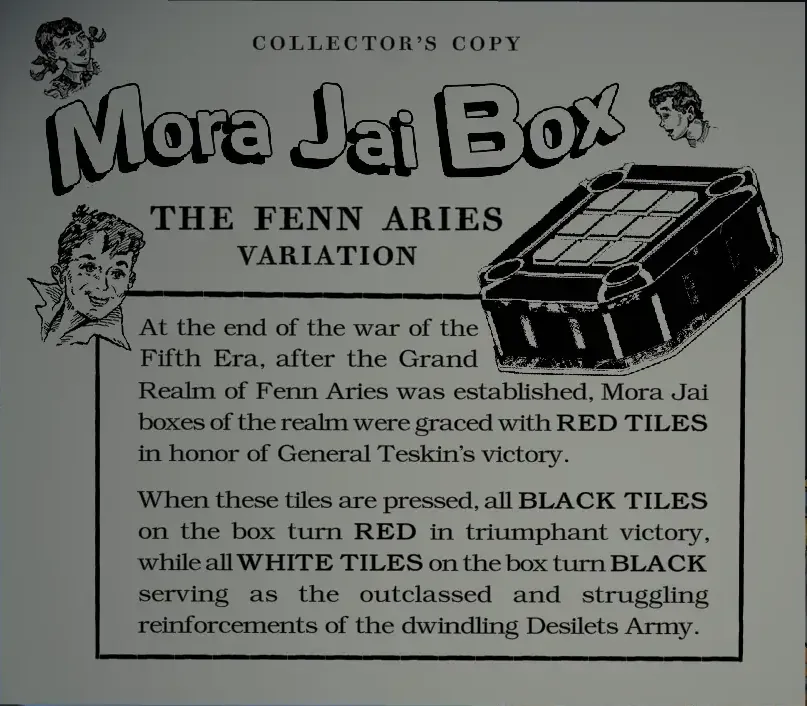
At the end of the war of the
Fifth Era, after the Grand
Realm of Fenn Aries was established, Mora Jai
boxes of the realm were graced with RED TILES
in honor of General Teskin’s victory.
When these tiles are pressed, all BLACK TILES
on the box turn RED in triumphant victory,
while all WHITE TILES on the box turn BLACK
serving as the outclassed and struggling
reinforcements of the dwindling Desilets Army.
The Nuance Variation
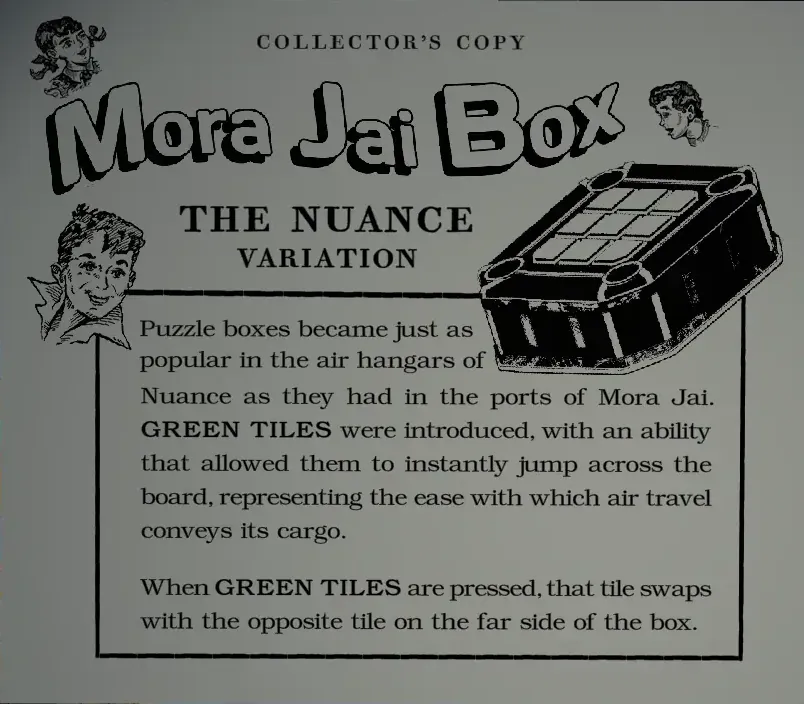
Puzzle boxes became just as
popular in the air hangars of
Nuance as they had in the ports of Mora Jai.
GREEN TILES were introduced, with an ability
that allowed them to instantly jump across the
board, representing the ease with which air travel
conveys its cargo.
When GREEN TILES are pressed, that tile swaps
with the opposite tile on the far side of the box.
The Orinda Aries Variation

Due to the overwhelming
amount of artifacts bearing
the Orinda Aries sigil that were destroyed after
the war, Mora Jai puzzle boxes featuring the
infamous black symbol are among the rarest
(and most valuable) collectors can acquire.
When BLACK TILES are pressed, the entire
row shifts to the right, as if on train rails.
The Verriation
Verra
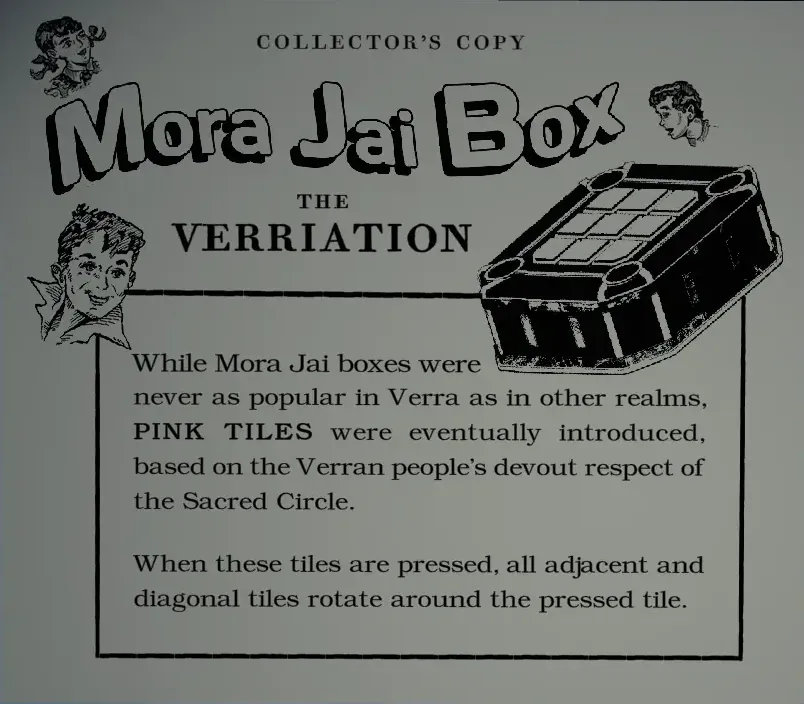
While Mora Jai boxes were
never as popular in Verra as in other realms,
PINK TILES were eventually introduced,
based on the Verran people's devout respect of
the Sacred Circle.
When these tiles are pressed, all adjacent and
diagonal tiles rotate around the pressed tile.
The Mount Holly Variation
penned in blue, Mary's handwriting
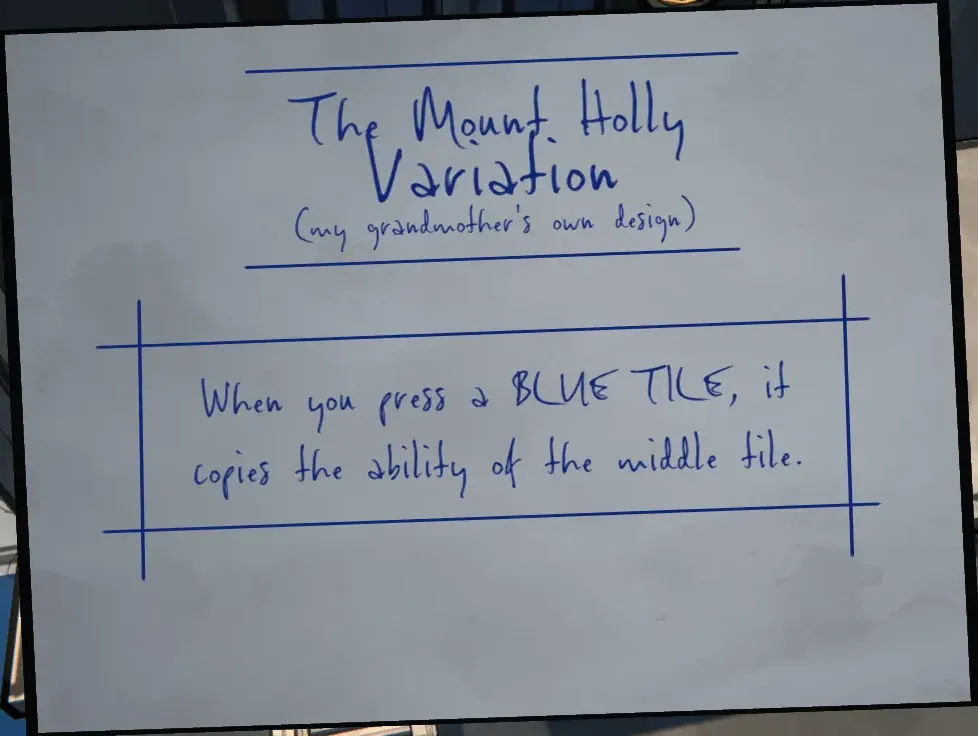
(my grandmother's own design)
When you press a BLUE TILE, it
copies the ability of the middle tile.